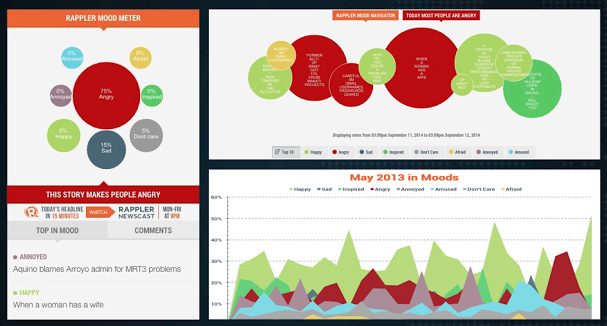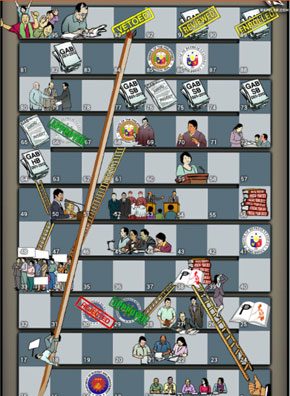SUMMARY
This is AI generated summarization, which may have errors. For context, always refer to the full article.

Journalism has changed forever. I’ve spent most of 2014 traveling the world, from Asia to Europe to North America, in search of how news groups are coping and evolving our profession. Next week, I’ll be speaking at the Walkley Foundation’s Storyology in Sydney, Australia along with news heads from The Guardian, BuzzFeed, the Texas Tribune, the Investigative News Network and many more. This happens at a time when ABC Australia announced it was laying off 400 journalists soon after CNN cut 8% of its staff (or about 300 people), Turner Broadcasting cut 10% (or about 1,475 staff), and Thomson Reuters slashed 3,000 jobs.
We’re living through a time of creative destruction, and it will get worse if you hold on to the past. There is a bright side.
Technology gives journalists new power. Instead of fearing the dramatic shifts in our industry, we celebrate it because it provides new ways of solving age-old problems that allow journalists to go far beyond storytelling.
In a country like the Philippines, where institutions are weak and corruption is endemic, we can capture the zeitgeist of a frustrated society, push action and help build institutions bottom-up.
Which is exactly what we set out to do.
Using a patented user-engagement model, we link the main components into a cycle driving action. Content creation is amplified by social media, which allows engagement that leads to crowdsourcing. The most immediate easy action is to click how you feel – a mood meter with every story, and every mood vote is aggregated into a mood navigator that displays the top 10 stories (with the most number of votes) and the crowdsourced mood of the day. Pulling all that data together, you can see trends in months and years – only one of the strands of big data we monitor, giving more insight to the public we serve.
The growth of social media has trounced the powerful gate-keeping power of traditional media and democratized information. Now we no longer need expensive equipment and corporate structures to ripple a message through society.
Crowdsourcing capitalizes on the emotions driving social media, which affects us biologically. Numerous papers have been written about how the use of social media affects the plasticity of the brain and is mildly addictive. Among others, FMRI studies show those using Twitter and Facebook have elevated levels of dopamine, a neurotransmitter in the brain linked to addiction, and oxytocin, known as the sex or love hormone.
As we learn more about how this changes us, we see how easy it is to drive action. When you have crowdsourced actions, you have an engaged community which can then be funneled to act for real-world impact.
Rappler has 4 main initiatives turning social media crowdsourcing into civic engagement working collaboratively with our partners:

1. #BudgetWatch: How can we stop corruption? Show me the money. Which is exactly what this microsite, with the Open Government Partnership, Department of Budget Management, and several non-governmental organizations, is about.
We present budget data and concepts in easily digestible and visually engaging ways like the game of Slides & Ladders to show the budget approval process or another interactive game allowing the public to submit their own budget priorities and see how their proposals impact different sectors.
Moving easily between real-world forums with newsmakers, social media interactions and virtual actions, this is the first iteration of Rappler’s anti-corruption efforts.
2. #ProjectAgos: We turn the same tested workflow to deal with climate change adaptation and disaster risk reduction in a country that has an average of 20 typhoons every year. According to the World Disaster Report 2012, the Philippines is the 3rd most disaster-prone nation globally.
In collaboration with the Philippine Climate Change Commission, the Office of Civil Defense, the Department of Social Welfare and Development (DSWD), the Department of the Interior and Local Government, other national and local government units, as well as the Australian embassy in the Philippines, the UNDP and private sector partners, Rappler piloted a one-stop online platform that combines top-down government action with bottom-up civic engagement. We are also part of Patrick Meier’s Digital Humanitarians, a global network of volunteers deployed during disasters.
Project Agos includes a risk knowledge database and interactive tools like hazard maps, compliance trackers that aid officials in preparation for the storm. Our microsite includes a wide range of information necessary before, during, and after any weather disturbance.
During a typhoon, a crowdsourced map of floods and calls for help provides real-time reporting, and first responders see and reply, giving others who want to help a broader view. We’re in the process now of adding machine learning, an algorithm the crowd can effectively “teach” and which will then automatically map social media inputs building on the work of the Qatar Computing Research Institution (QCRI).
3. #HungerProject: The Philippines’ incidents of hunger continue to increase despite its growing GDP, among the highest in Asia and the world in recent years. Working with the World Food Programme and the Philippines’ DSWD, we tell the stories that show how this can impact our future.
Stunting is a serious problem: we are #9 globally from a list of 14 countries where 80% of the world’s stunted population live. Stunted children are not only physically smaller, but they grow up with impaired cognitive development and suffer other health conditions.
4. #WhipIt: This commercial partnership with Pantene focuses on gender bias and women’s rights by questioning society’s labels. Rappler organized a women’s forum to launch an innovative ad campaign and commissioned a survey looking at how society perceives women today in the Philippines. The online ripple reverberated globally. The campaign hit a tipping point when Facebook COO Sheryl Sandberg posted the campaign, prompting P&G to announce that it would bring the Philippine-born campaign to the West.

Let me end with big data and social network analysis. In the end, technology empowers by removing barriers to entry and engagement. Big data is publicly available – starting with what we put out there voluntarily on social networks, and understanding that and the way messages ripple out through social networks give us added insights into the kind of content we create for our audience.
I’ll leave you with two final examples of the impact of big data on our society:
1. In our mid-term elections, Rappler signed an agreement with our Commission on Elections, giving us access to the full data set of automated voting results. With that, we created a real-time reporting template that broke results down into granular details. No longer do you need to wait for the television anchor to announce the results you’re interested in. Now you can search – and go back in time – instantly. This made reporting transparent, and removed old allegations of bias or “trending” when reporting election results. It was the first time globally that such granular details of voting results were available real-time.

2. In August 2013, a Facebook post against institutionalized corruption – a scandal Rappler reported on extensively – took 7 days to mobilize a protest of more than 100,000 people out on the streets. This outrage continues to simmer beneath the surface, demanding accountability from both the public and private sectors.
It’s a brave new world of endless possibilities – all of which give new power to citizens, who – armed with information – can work collaboratively with other stakeholders to solve age-old problems and strengthen democratic processes.
– Rappler.com
Adapted from an original post by the author on +SocialGood.
Add a comment
How does this make you feel?
There are no comments yet. Add your comment to start the conversation.